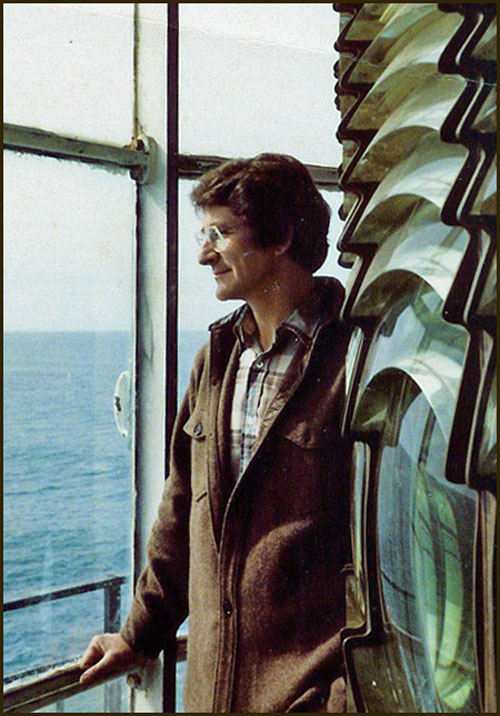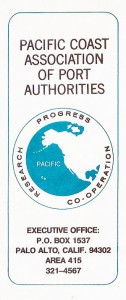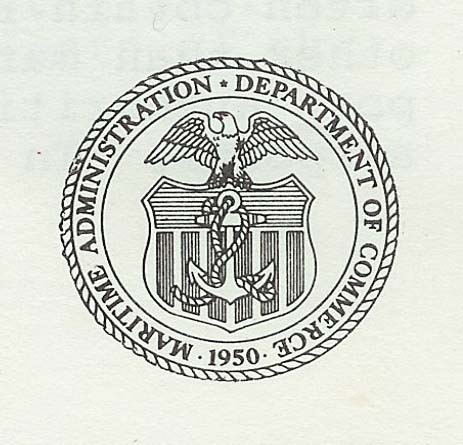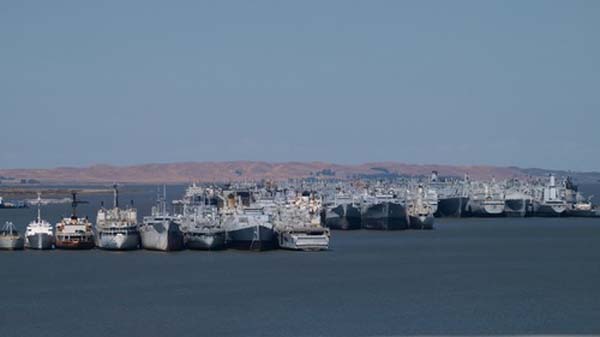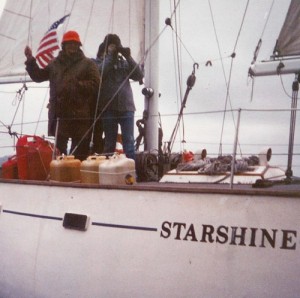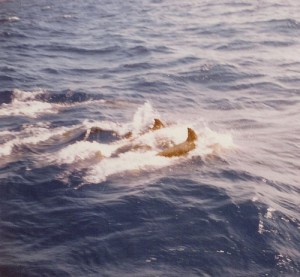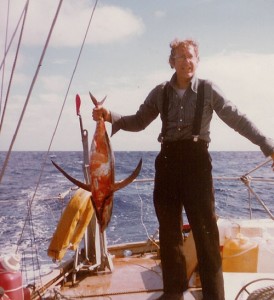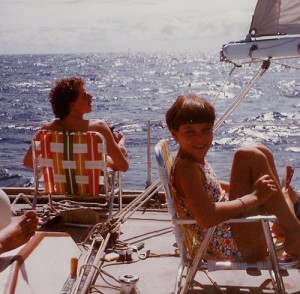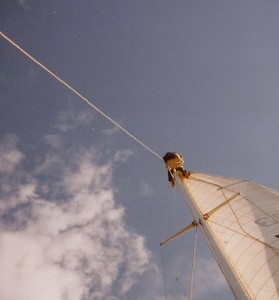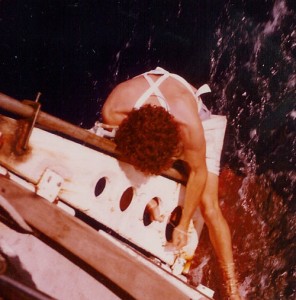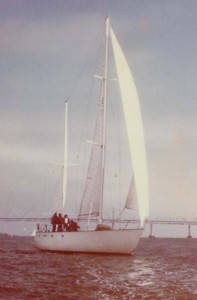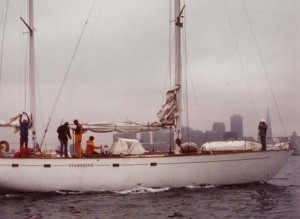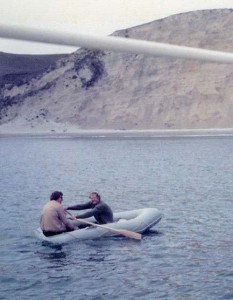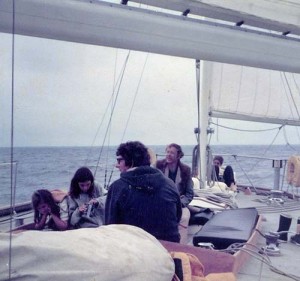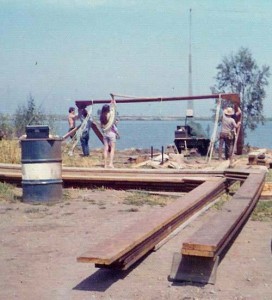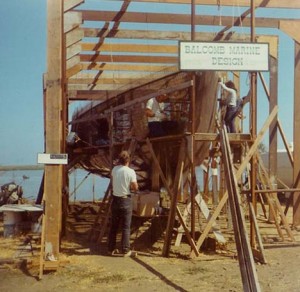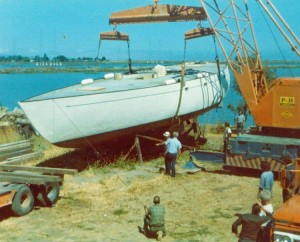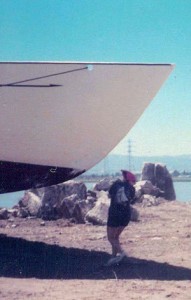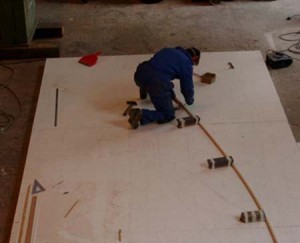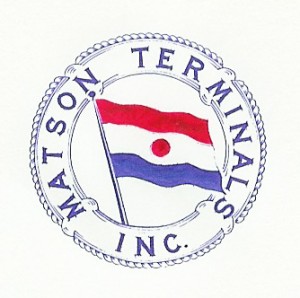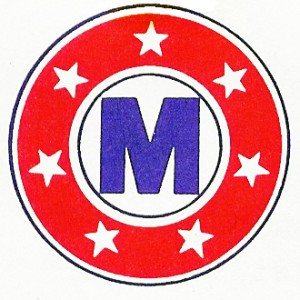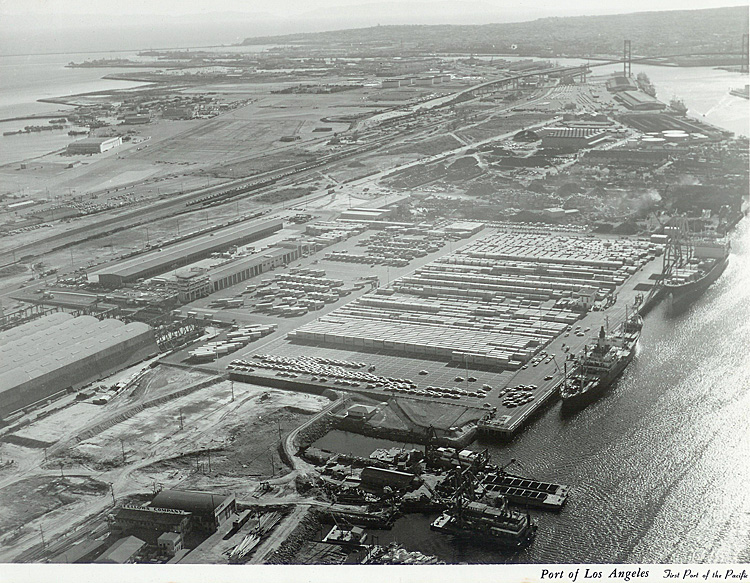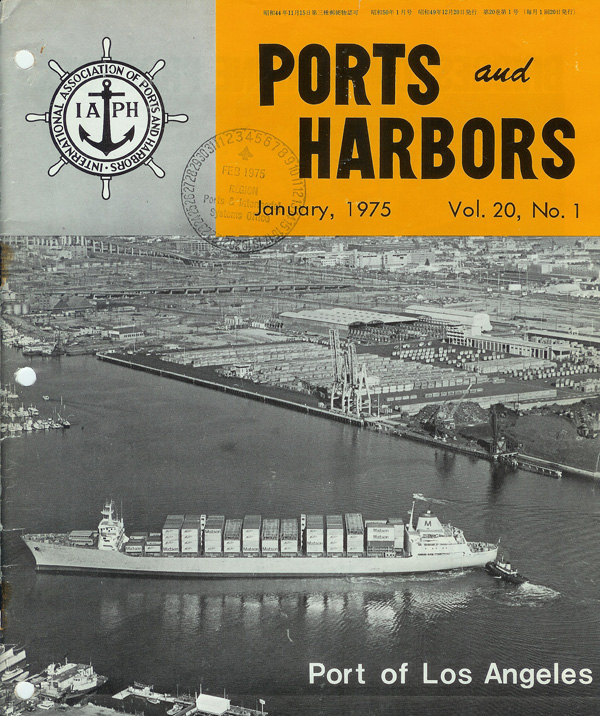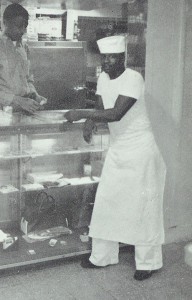SEA STORIES
About Sea Stories
With several exceptions, most of Uncle Rob’s formal employment was with nautical or maritime organizations. These stories are gleaned from that history. Some have an element of humor , others are just mildly fascinating historically. In addition, I owned three different boats each with it’s own set of salty tales.
Where Were You When Nixon Resigned
After four years with MarAd, I decided to bite the bullet and start my own consulting business. I had the technical know-how from my work with Matson, and my MarAd experience had provided me with many contacts. I envisioned my services would center around the port and marine terminal industries. My first client was the Pacific Coast Association of Port Authorities (PCAPA). They hired me and kept me on a retainer to act as their Executive Vice President. This would consume about a third of my time. My basic duties involved running the Association, overseeing various research projects, collecting dues, publishing a newsletter and organizing a convention once a year.
There were approximately 35 ports in the membership and seven of them were Canadian. PCAPA was primarily an organization of commissioners, as opposed to staff. Some of them were elected but most were political appointees. Appointments were usually made by the mayor of a city or, sometimes, by the governor of a state or province. They tended to be successful businessmen in the community associated with a particular port, and in the U.S. they were, to a man, Republicans.
Each year a particular port would act as host for the annual convention, and since one fifth of the ports were Canadian, the convention was held in Canada once every five years. This was the case at the time of the Watergate Scandal that over took the Nixon Administration. The host port at that time was the Port of Vancouver, B.C. The Chairman of their commission was President of PCAPA for that year. At one point during the course of the convention (August 9, 1974) the membership was gathered for lunch in a large banquet hall filled with large round tables that would seat 10 or 12 for a meal. I was seated at one of these tables in the middle of the room. On my right was a friendly and outgoing commissioner from the port of San Diego. He was, in fact, a personal acquaintance of President Nixon. The Watergate Scandal was the hot topic of discussion and right of the middle of our conversation, the President of PCAPA entered the room and went up to the podium:
“Gentlemen, I have an important announcement to make. The President of the United States has just resigned.”
The entire room was stunned into absolute silence. You could have heard a pin drop. Being as he was a Canadian, addressing a room full of mostly Americans the President of PCAPA was now in a rather awkward position. He felt like he should make some comment but finding the right words was a problem. Finally he said;
“Well, I guess. . . well, that shows. . . well, I guess that proves that democracy works.” He spun on his heel and left the podium quickly.
Slowly, a low murmur filled the silence. Then the commissioner on my right, addressing the whole table, said;
“Yeah, but how many of you can say you voted for the other guy [George McGovern] in last election?”
No one answered. I hesitated for a few seconds, then I raised my hand and said softly,
“I did.”
He slowly turned and looked at me squarely. Then he smiled and said,
“You know, I like you. You’re honest.”
1. Working for MarAd
I spent four years working for the U.S. Maritime Administration. At that time it came under the Department of Commerce and its duties and functions were being greatly expanded. It is interesting to note that this was during a republican administration and the President was Richard Nixon. My title was Western Region Port Development Representative. I was the first person to hold the position and that, to some extent, allowed me to design the job around myself. There was a fair amount of research money available with which we could address problems of a generic nature that plagued the port industry. I worked closely with various industry associations to find worthy projects for research, and in the process I became familiar with almost all of the ports on the U.S. west coast plus Hawaii. I made many friends and contacts within the industry and that eventually proved useful when I started a consulting business.
MarAd’s core responsibility was subsidizing U.S. flag vessels so that they could compete successfully with vessels that registered under foreign flags, resulting in their access to cheap labor. U.S. flag vessels were required to hire U.S. citizens. Another MarAd responsibility was the administration of the National Defense Reserve Fleet which, in the Western Region, was located at Suisun Bay. I was allowed to visit that fleet on one occasion and was given a guided tour.
For me, the most interesting part of this tour was that my path crossed once again with the USS PICTOR AF-54, the same vessel I served on in the Navy. (To see several posts regarding the PICTOR click here). The Navy had returned the PICTOR to the Maritime Administration in 1970 and there she was, my former home afloat for two years. I went aboard and wandered around. It was like strolling through a ghost town. In fact, the whole moored fleet had a kind of spooky feeling to it. This was accentuated by the wind whistling through the rigging and the moan and groan of all the ships working against each other. I roamed here and there to see if I could find any evidence of my former presence — I could not. I went into my old stateroom and stared at my old berth. I went into the wardroom which looked the same except there was nobody there. There was always somebody in the wardroom. Finally, I went up to the bridge and looked at the chart table. The drawers beneath it still had charts in them and there was a set of parallel rulers adrift on top. The whole experience was rather strange and melancholy. You really cannot go back again.
3. Navigating to Hawaii
Doug’s plan for his great adventure was a grand tour of the South Pacific islands, and it all began with a first leg to Hawaii. The STARSHINE left Alameda on October 4th, 1977 and I was on board. The crew consisted of Doug, his wife Linda, his daughter Heather, his brother Stan and four good friends.
(click on image for larger view)
Navigation soon became a main topic of conversation because, in the crew of eight, there were five of us that knew celestial navigation and each had a sextant at their disposal. It was decided that each would calculate their own fix and plot it on the chart. We would then average them all together and that would be our working fix for the day. Because I was nearsighted and wore glasses, I always found evening stars and morning star difficult to do. You have to be able to see the star and the horizon at the same time, and when the horizon is visible the stars are hard to spot. Glasses are definitely a hindrance. Consequently, I specialized in LAN (Local Apparent Noon). LAN is normally used only for latitude, but if you have accurate time there is a way to determine longitude as well. This was in the early days of digital electronic wrist watches. They kept excellent time, and were much easier to use than the mechanical chronometers I used in the Navy.
Other members of the crew had specialties too. Doug’s bother, Stan, was “Chief Fisherman.” In preparation for the trip he had researched the technicalities of fishing for albacore which are colloquially referred to as “winged pigs.” They are fat little tuna with long pectoral fins, and they are considered to be one of the best of the tunas for eating. Stan usually had his albacore line out in our wake and the results were good as you can see from one of the photos below. Linda was cook, and Heather was all-around “Girl Friday” including standing watches at age eleven.
In general, the passage from California to Hawii is an easy trip. It is a down-wind slide all the way. This particular voyage was no exception. We had lots of sun, and made it to Hilo on the “Big Island” in a little over 15 pleasant days.
As I remember, when we were three or four days from Hilo, we had a humorous little incident that proved interesting from a navigational point of view. It happened during one of the night watches when the deck watch, let it be known there was a brightly lit ship coming into view. Everyone went up on deck to take in this sight. Sure enough, approaching from the direction of Hawaii was a cruise ship and it looked like a whole village with all its lights. We also noted that it looked like a collision course. Doug got on the radio and called them up. The conversation went something like this:
“Passenger vessel — this is the ketch STARSHINE, ten days out of San Francisco, bound for Hilo. We have you off our port bow with a constant bearing and closing range. Do you see us?”
All our running lights were on but a couple of the crew played flashlights on the sails to increase our visibility. An answer came back within seconds. This with a pronounced British accent:
“Yes, STARSHINE — this is the Princess Lines ship XXXXXXX, two days out of Honolulu bound for Los Angeles. We see you and will alter course to pass astern of you.”
In situations like this, a vessel under sail has the right-of-way according to the International Rules of the Road. They did as they said and there was no danger at all, but since we had them on the line, we decided to ask them for their position.
“Wait one” was the reply.
Within a minute they were on the air again with a longitude and a latitude which they explained was a DR (Dead Reckoning) from some 30 hours ago. THIRTY HOURS AGO! In the meantime we had done evening stars, morning stars, LAN and evening stars again. This was a bit of an eye-opener for us. Here was this huge impressive ship and we were much more conscientious in our navigation than they were. The truth of the matter, however, is that we were navigation fanatics and, when you stop and think about it, there really isn’t anything to run into between Hawaii and the West Coast. I even heard of one rustic character who, being ignorant of celestial navigation, got to Hawaii by following the airplanes passing overhead.
We immediately went to the chart to find out how close they were to us. The latitude looked okay but the longitude put us somewhere in Arizona. We got back on the radio again and asked if they would please confirm the longitude they had given us. Again the very British accent came back, but this time you could almost feel the embarrassment in it. He had apparently transposed some digits and what should have been 141 was given to us as 114. He blamed it on the ship’s computer. We plotted this new number on the chart and found that they were still so far from us that we shouldn’t be able to see them, but there they were a couple of hundred yard away. At that point we decided to leave well enough alone. Our navigation was RIGHT ON. Several days later I got up in the morning, looked at the chart and thought: “We should be able to see it from here.” I went up on deck and sure enough there was the top of Mauna Kea poking up through the morning mist.
“LAND HO !”
All this reminiscing about celestial navigation makes me feel a little sad. It was always such a satisfying experience to make your sights, do your calculations using logarithms, plot your fix and be able to point with confidence to an X on the chart and say “We are here!” Today, with GPS (Global Positioning System) and computers the task has become mundane. I wonder if the Navy even has a position aboard ship called “Navigator” any more.
Upon arrival in Hilo, I had to leave and fly back to my job in San Francisco but Doug, to his credit, went on and completed his grand tour of the South Pacific.
2. Fitting Out and Tuning Up
After the launch of STARSHINE Doug obtained a berth in Alameda on the Oakland Estuary. He sold his house and moved his family aboard the boat. There was still much work to be accomplished to complete the construction of STARSHINE. He had decided on a ketch rig and that rig was almost as much work as the basic hull. I don’t remember the exact sequence of events, but at some point he quit his job with Matson and obtained financial backing from his father.
One event that does stick in my mind is the stepping of the sixty-foot main mast. Most people would have hired a crane for this job, but Doug had figured out how to do it using the winches of the boat and the main boom to create a fairlead and leverage. It was a unique demonstration of ingenuity and daring. The mast was tipped vertical and lowered down on to its step while a number of friends and family manned temporary stays to prevent disaster.
Eventually, the rig all came together and after that it was a matter of working out the bugs and learning to handle whole thing. Here is how she looked underway:
(click on image for larger view)
Tuning up consisted of a year spent racing STARSHINE on San Francisco Bay. There were also a number of coastal trips. Our two families took one trip up the coast to Drakes Bay. Here are a couple of photos from that trip:
Toward the end of 1976 Doug was feeling confident about sailing STARSHINE and began to make plans for a really BIG adventure the following year.That will be the subject of my next post.
1. A Boat is Born
Having an established genealogy (see LA BAÑERA and GAMBELLA), and having been conceived (click here), the future STARSHINE entered a long gestation period. Doug eventually rented space at the Palo Alto Boat Works (East Palo Alto location), and obtained an old Matson container in which to store tools and materials. Serious construction then began in on his future boat. Here are two photos of the work underway:
Needless to say, many hour were spent on this effort, not only by Doug, but also a large circle of friends and family.
(click for larger view)
Ferrocement construction requires that an armature be assembled to which a special blend of water-impermeable cement is subsequently applied. Hours and hours were spent twisting ties, shaped like an old fashioned hair pins, to hold all the wire mesh etc. together. The nerve-wracking part of the whole process is the fact that the most crucial step is out of your control. Application of the cement must be done all at one time and by a crew hired for that for that purpose. However, Doug proved to be a good planner, and each step was carefully thought out beforehand.When the day came to apply the cement, things went well with only a few minor glitches. The whole structure was then covered with tarps and the hull was steam-cured for a period of time. After the curing there was still the deck and internal bulkheads to build, installation of the engine, paint to be applied and on and on and on.
Eventually, the time for launch did arrive. This is another occasion that is bound to make one a bit nervous, and necessitates the hiring of a crew and crane. Here are a couple of shots of that day:
(click on image for larger view)
The baby was then spanked on its bottom with the waters of San Francisco Bay.
2. STARSHINE Design on Matson Time
As indicated in an earlier post (click here and scroll down to “2. Sinking Beer Cans”), my buddy Doug and I both worked for Matson Navigation Company in their Industrial Engineering Department. This enabled us to plan our restoration of the GAMBELLA in detail on company time. Eventually, however, Doug got ambitions to build a much larger boat, and I bought out his share of the GAMBELLA to help finance his efforts in that regard.
Doug had two main criteria for his new boat. He wanted it to have a flush deck with no visible cabin, and he wanted it to have full headroom below for himself. Doug was about a half inch taller than me — almost six foot three inches. So that, together with the flush deck requirement, dictated a design for a rather large boat. The STARSHINE, as she was eventually named, measured fifty-six feet on deck.
Doug was intent on designing and building this boat himself. In designing a vessel, making a drawing or even a scale model, may be the easy part. The problem is that a considerable error in measurements can accumulate in scaling up the plan. The traditional way to avoid this error is to lay out the curves full size on a large floor of some kind. Spaces used for this process were often lofts; hence the practice became known as lofting.
Doug didn’t have access to a loft, but he did have access to the office computer and he was a math major in college. Using a computer-aided process called multiple regression analysis, he managed to fit a mathematical equation to each longitudinal and each cross-section line of his plan. He then set them equal to each other at every place they were supposed to cross to see if they actually did meet at that point. If they didn’t, he modified the equations until they did. Even with the aid of the computer it was a long process that went on for weeks. This was in the early days of office computer systems. The individual terminals were like teletype machines and they all accessed a central processor. The engineers in the department all had their own offices and there was no office network to speak of and, hence, no central oversight on the computer use. If you could hear a terminal running then that engineer was obviously hard at work. I was the only one who knew what Doug was doing and I kept mum about it. Doug also got enough of his assigned work done that no one got suspicious. I left the company to go to work for the Maritime Administration before he finished, but he finally did get it all done. It was quite an impressive effort and everybody thought he worked so hard for Matson.
1. Working for Matson
Toward the end of my active duty with the Navy I began to think about what I was going to do with the rest of my life. I went to job interviews at a number of firms in the San Francisco Bay Area, and finally ended up with Matson Terminals, a subsidiary of the steamship operator Matson Navigation Company. Matson Terminals was a stevedore firm (loading and discharging of vessels) and they were the only company I talked to that placed some significance on my Navy experience aboard a cargo vessel. The parent company was mainly involved with interstate commerce, primarily to and from Hawaii and the West Coast, but also Guam and other Pacific territories. Matson Terminals was the stevedore for the parent company, but also had other “outside” customers as well. The Vietnam war was heating up at the time and Matson Terminals had the contract to do all the stevedore work for the Oakland Army Terminal. The Army Terminal was all conventional cargo, but Matson, in general, was a pioneer on the West Coast for containerized cargo traffic. At the time there was only one container crane in the SF Bay Area and that was in Alameda, next to the Dole Pineapple warehouses, one of Matson’s big customers. Now, If you drive through the Port of Oakland, for instance, you can see container canes from horizon to horizon.
I had a split tour with Matson, working for Terminals for two years before trying my hand at the electronics industry in Silicon Valley for a couple of years. Then it was back to the parent company Matson Navigation for another four years. My combined tenure with Matson was in their Industrial Engineering Department. In general, the work was not very exciting or creative. It was usually, “fix this problem here” or “come up with a solution to that problem there.”
There was, however, one project that I remember distinctly as being quite satisfying from start to finish. It was the design and construction of a brand-new container terminal in the Port of Los Angels starting with approximately fifty acres of vacant land and ending with a state-of-art container terminal. As I remember, the project ran on for well over a year and I was the principal engineer for Matson in charge of the conceptual design. I had to deal regularly with the civil engineers at the Port of Los Angeles who did the detailed “stress and strain” work. I became a regular commuter between SF and LA, sometimes flying back and forth two, or even three times, a week. I was very proud of the final result. It was impressive, and I remember thinking “This is without a doubt the best marine container terminal in the world.” It did make the industry news worldwide. Here are two aerial photographs of the completed terminal:
6. The Ney Award
In WESTPAC there was an honor awarded each year called the Ney Award. It was for the best feeding ship in WESTPAC. I have no idea how this award originated but, as I remember, the PICTOR was given the award for several years running during my tour aboard. Of course, we were a floating grocery store, and that gave us a leg up on most of the other ships in the fleet. There were, however, a number of other AFs (Auxhilary Refridgerated) in WESTPAC, so what made the PICTOR so special?
Frankly, I am not surprised we received this honor. The food was quite good aboard our ship. In addition, and this may seem counter-intuitive, the enlisted mess was better than the officer’s mess. They had better cooks than we did. In the officer’s mess all the cooking was done by the stewards and they were, to a man, all of Filipino descent. They were good sailors, obedient and conscientious, which is why they made good stewards. Had they been allowed to cook in their native tradition our food might have been more exciting, but they faithfully followed the standard Navy cookbook and its recipes. That book was not a work of art from a culinary point of view, but it did make a point of supplying recipes from all the different regions of the United States. The first time I ever ate okra, a traditional Southern vegetable, was in the ward room of the PICTOR.
I frequently heard grumbling among the officers about the quality of our grub, but I never once heard such a complaint from the rest of the crew. In fact, it was just the opposite, I often heard the sailors say good things about their cooks. Navy regulations required every meal served in the enlisted mess to be sampled by an officer, and this was a duty that we actually looked forward to.
How did this unique situation come about? Who gets the credit? Well, I was not a party to all the goings on behind the scenes, but the name I heard mentioned the most was a First Class Cook named Eddie Moton. My cruise book says that Moton was from Oakland, but I seem to remember that he was originally from Texas. Moton was something of a culinary artist, plain and simple, and that kind of artistry is a difficult thing to maintain when cooking three meals a day for 200 men. He was especially good at barbecue, and his barbecued ribs were to die for. If you were the officer who had the duty to sample the crew’s mess when Moton was barbecuing ribs you were the envy of wardroom; and if you used this as a bargaining chip there is no telling what you might obtain in trade.
(click on image for larger view)
So, in my book, the PICTOR’s success with the Ney Award is directly attributable to First Class Cook Eddie Moton and his crew.
For the final chapter of my experience with the USS PICTOR click here.
5. Mary Soo
Mary Soo was one of the more remarkable individuals whose path crossed mine. She and her crew of mostly women would contract to paint an entire Navy ship while it was anchored at Hong Kong. Hong Kong was always the high point of every WESTPAC cruise, liberty was generously granted. One of the things that made this possible was Mary Soo and her outfit. Typically, we would stop in Hong Kong for a full week of rest and recreation (R&R).
Here is a panorama of Hong Kong harbor showing Navy ships anchored out in the bay —there were no port facilities:
Upon arrival Mary Soo or one of her lieutenants would come aboard and work out a deal to paint the ship. Sometimes she would do the job just for the right to the garbage from the ship’s messes. Because Hong Kong was a liberty port, and a good portion of the crew was ashore at any one time, much of the food prepared aboard ship went unconsumed. This was carefully packaged and turned over to Mary Soo who sold it here and there in the city. It was sometimes wryly observed by seasoned salts that food purchased by sailors ashore might have been had for free aboard ship.
Because Navy regulations prohibited paying foreign nationals in cash for work accomplished on the ship, other means of compensation had to be found. Garbage was one solution, but the PICTOR was quite experienced in these matters, and we would usually load up with war surplus scrap metal in the Phillipines before proceeding to Hong Kong. Mary Soo was always delighted to see all of that stuff, especially if there was brass invovled.
After the deal was completed, a small fleet of sampans would arrive and an army of mostly women would file aboard to start painting. We provided the paint and they did the work. One reason that most of them were women was because Mary Soo also ran an orphange. She would “buy” unwanted female children and raise them in her orphnage. She probably saved the lives of many girl babies in this way. When the chilren were old enough to work they would join the ship painting effort. As workers they were paid a small wage, but this was put into an account for them which they would receive in full upon reaching adulthood. After that they could stay with Mary Soo or make their own way in the world. Sometimes some of the small children would accompany their older counterparts out to the ship. They didn’t actually come aboard but would stay on the sampans alongside. I remember on one occasion looking over the side and watching several girls of about age five or six playing on the stern of one of the boats. One of the girls was blond and fair. Needless to say that was highly unusual. I wasn’t close enough to see her facial features, but she was speaking fluent Chinese. I assume she was one of Mary Soo’s orphans.
The workers were always dressed in ragged, paint-covered clothes and they all wore the conical coolie hat as protection from the Sun. It was almost impossible to tell what they looked like. Instead of brushes, they used rags or textile waste to spread the paint. The few men there were used long poles to paint the sides of the ship from sampans moored alongside. They were a good natured bunch and there was much laughing and joking between the girls and the PICTOR’s deck force.
Because the PICTOR was such a good paying ship, May Soo always threw a big party for us at the end of the week. It was at this party that I first saw Mary Soo in person. She looked to be about eighty years old at the time (1963), yet she was obviously a very shrewd business person. The big surprise at the party, however, was the girls — they were gorgeous! They all wore their best party dresses, had their hair done and their makeup on. Our first reaction was these can’t be the same girls that painted the ship, but they were.
Several years after I left active duty I read in the newspaper that Mary Soo had died. It made the news all over the world.
Categories
- THE GALLERY
- Uncle Rob's Art
- 3D Works (stills) I
- 3D Works (stills) II
- 3D Works (stills) III
- 3D Works (video)
- Design & Abstract I
- Design & Abstract II
- Design & Abstract III
- Figurative Works I
- Figurative Works II
- Landscapes I
- Landscapes II
- Largest Art Project
- Nautical and Marine Images (video)
- Nautical and Marine Images I
- Nautical and Marine Images II
- Nautical and Marine Images III
- Nautical and Marine Images IV
- Portraits
- Still Life Images
- Stump Hollow Photo Essay I
- Stump Hollow Photo Essay II
- Uncle Rob's Mendocino Shop
- The Five Sense Series
- Irene's Creations
- Works by Don Mason
- Works by Don Mason II
- Works by Joseph de Borde
- Painting by Albert Robbins
- Art by Leslie Masters Villani
- Paintings by Nellie Harriet Parker
- The Art of Bee Yearian
- Works by Evie Wilson
- Uncle Rob's Art
- SCHOONER MOON BOOKS
- SEA STORIES
- ONE DOZEN AND TWO ESSAYS
- Cousinhood
- Art by Definition
- Cake Mixed Economy
- Marriage Anyone?
- Sex and/or Violence
- Searching for Truth
- The Philosophical Roots of Science
- Stepping Stones and Stumbling Blocks
- On Being Good
- Teaching By Example
- The Basic Law of Civilization
- Where Goeth Evil?
- A Modern Empircal "Religion"
- Knowledge as Wealth
- PAPERS AND ARTICLES
- FAMILY STORIES
- BOOK REVIEWS
Archive
- December 2021
- October 2020
- June 2020
- September 2019
- July 2017
- March 2017
- December 2016
- November 2016
- October 2016
- August 2016
- July 2016
- June 2016
- May 2016
- March 2016
- February 2016
- February 2015
- January 2015
- February 2014
- December 2013
- November 2013
- August 2013
- June 2013
- August 2012
- July 2012
- April 2012
- March 2012
- February 2012
- November 2011
- September 2011
- June 2011
- May 2011
- April 2011
- March 2011
- February 2011
- January 2011
- December 2010
- November 2010
- October 2010
- September 2010
- August 2010
- July 2010
- June 2010
- May 2010
- April 2010
- March 2010
- February 2010
- January 2010
- December 2009
- November 2009
- October 2009
- September 2009
- August 2009
- July 2009
- June 2009
- May 2009
- April 2009
- March 2009
- February 2009
- January 2009
- December 2008
- November 2008
- October 2008
- September 2008
